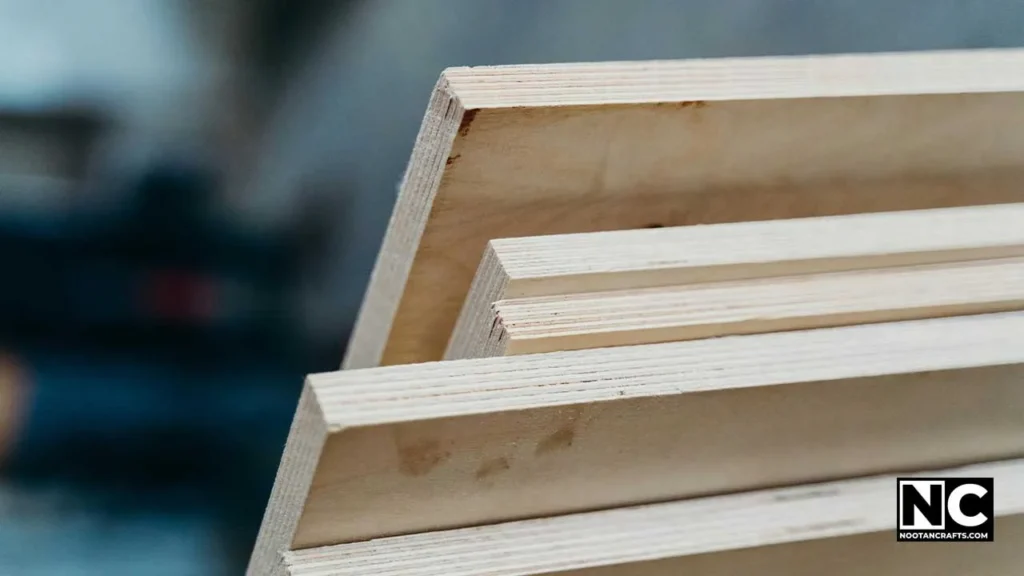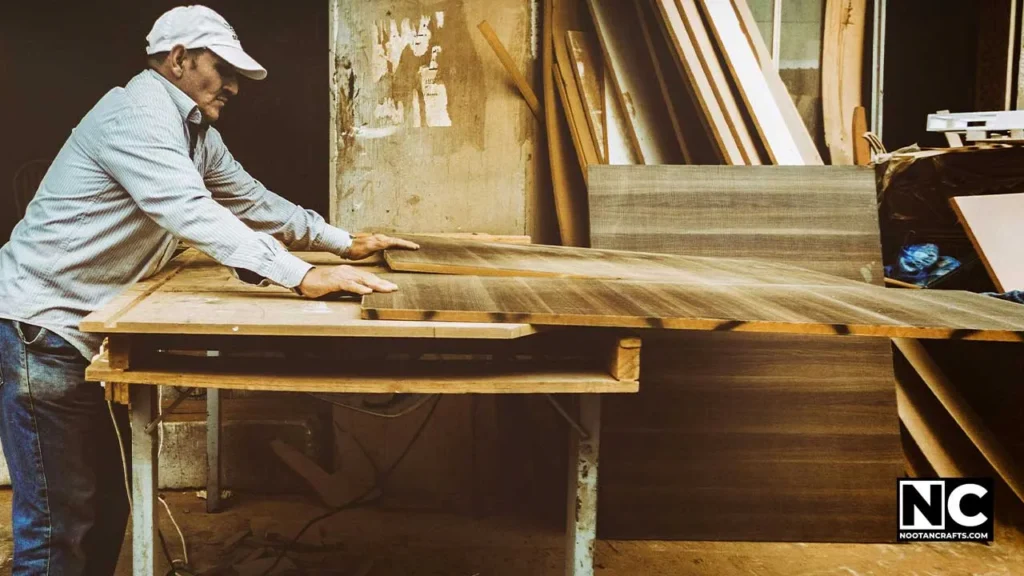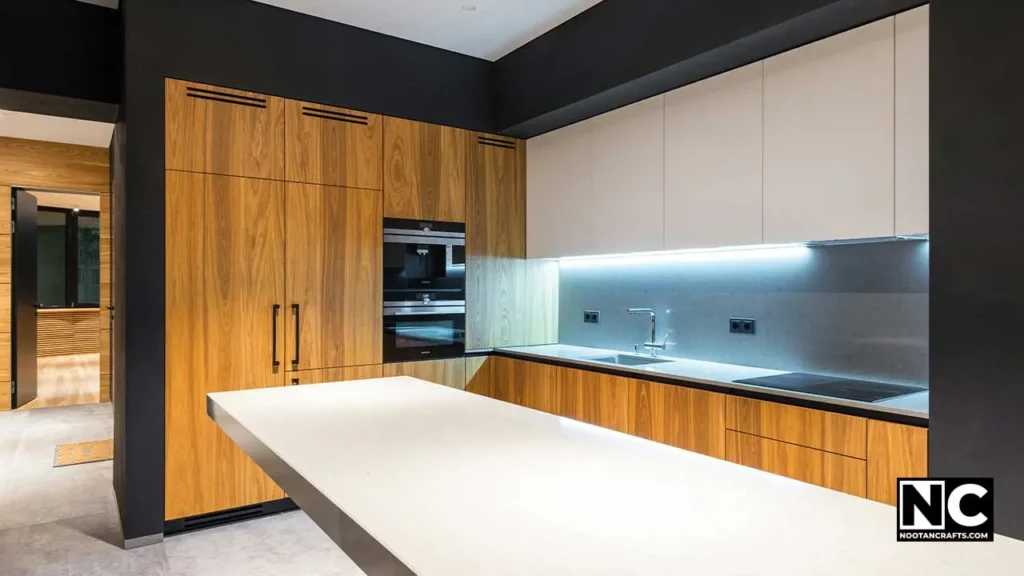Structural plywood vs non-structural plywood — you probably have many questions in mind! Which is better for the outdoors? Which one is stronger? How should I decide which is better for my project, structural or non-structural plywood?
Whether you’re building furniture, a house, or just tackling a DIY project, choosing the right plywood can make or break your work — literally! So, what exactly is the difference between structural and non-structural plywood? In this guide, we will learn the key differences, where to use each type, and why choosing is essential. So, let’s do this!
What is Structural Plywood?

Structural plywood is certified and manufactured for use in load-bearing applications. That’s why it’s strong enough to hold weight and maintain a structure’s integrity.
This type of plywood is made by gluing multiple layers of wood veneer together. The adhesive used in structural plywood is weather-resistant, making it perfect for outdoor and high-stress environments.
Key Characteristics of Structural Plywood:
- Load-bearing strength: The significant advantage of structural plywood is its ability to support heavy weight, making it perfect for roofing, flooring, and walls.
- Durability: Structural plywood is designed to withstand harsh elements, so it won’t deform under rain, wind, or heat.
- Certifications: It comes with specific certifications (like IS 10701 in India) verifying its strength and structural performance. You have to check certification according to your country.
- Versatile application: From beams and frames to subfloors and external cladding, structural plywood can support a wide range of construction purposes.
Types of Structural Plywood:
- A-Bond Plywood: Suitable for exterior use due to its water-resistant glue (phenol-formaldehyde resin) which will not weaken under wet conditions, heat, or cold.
- F14 and F17 Grades: These grades indicate the strength levels of plywood—higher numbers mean stronger plywood, perfect for heavy-duty projects.
What is Non-Structural Plywood?

As the name suggests, non-structural plywood isn’t designed with strength in mind; it’s generally made for decorative purposes. It’s still made from layers of wood veneer, but the adhesive used isn’t as strong or weather-resistant as that in structural plywood.
Key Characteristics of Non-Structural Plywood:
- Aesthetic focus: Non-structural plywood is often considered for its appearance, such as making furniture or decorative panels.
- Lower strength: Due to its structure and weakened adhesive, it is not intended for load-bearing use; therefore, it must be avoided where structural support is needed, such as a beam or frame.
- Interior use: Since it’s not built to withstand harsh conditions, non-structural plywood is best kept indoors or in low-stress environments.
- Cost-effective: It’s usually cheaper than structural plywood. Its budget-friendly nature makes it perfect for DIY home and aesthetic projects.
Types of Non-Structural Plywood:
- C-D Grade: This is often used for projects that look less important, like backing, covering, or making temporary structures.
- Laminated Plywood: Primarily used for furniture or cabinetry, where appearance is the focus.
Key Differences Between Structural and Non-Structural Plywood
| Feature | Structural Plywood | Non-Structural Plywood |
| Load-Bearing Capacity | Designed for weight-bearing and high-stress areas | Not suitable for load-bearing applications |
| Weather Resistance | Bonded with weather-resistant adhesive (A-Bond) | Less weather-resistant, mainly for indoor use |
| Strength | High strength and durability | Lower strength meant for aesthetic or temporary use |
| Certifications | Certified for structural applications | No certifications for structural use |
| Typical Applications | Roofing, flooring, walls, beams, outdoor projects | Furniture, cabinetry, interior paneling |
| Cost | More expensive due to high performance | Generally more affordable |
| Durability | Can withstand outdoor conditions | Not suitable for moisture-prone areas |
When to Use Structural Plywood

Structural plywood is recommended if your project comprises any load-bearing structures or is exposed to harsh elements. This type of plywood is ideal for:
Roofing: Structural plywood is used to form a solid framework of a roof. It’s sturdy enough to handle the weight of tiles, insulation, and even snow.
Flooring: Structural plywood is an excellent option for a house subfloor because it needs to support furniture and people and withstand shifting and settling over time.
Walls: In construction, structural plywood is used in the wall due to its durability and strength.
Outdoor Projects: Structural plywood’s weather-resistant properties make it a solid choice for outdoor structures like decking or sheds.
When to Use Non-Structural Plywood

On the other hand, non-structural plywood is perfect for interior, decorative, or light-duty projects where strength isn’t as crucial. It would be best if you used it for:
Furniture-Making: Non-structural plywood is excellent for creating pieces like bookshelves, cabinets, or desks.
Interior Walls or Paneling: Non-structural plywood can be used to add a beautiful decorative touch to an interior wall.
Cabinetry: Since cabinetry doesn’t bear heavy loads, non-structural plywood is a cost-effective choice for creating a stylish and functional space.
FAQs Regarding Structural vs Non-Structural Plywood
- 1. Can non-structural plywood be used outdoors?
- No, non-structural plywood lacks the durability and weather resistance required for outdoor use.
- 2. How can I tell if plywood is structural or non-structural?
- Structural plywood will often have certifications printed on the sheet, such as IS 10701 in India (Check with your country), which ensures it meets load-bearing standards.
- 3. Is structural plywood waterproof?
- While structural plywood is water-resistant due to the adhesive used, it’s not entirely waterproof unless it’s marine-grade plywood.
- 4. Which is more expensive: structural or non-structural plywood?
- Structural plywood tends to be more expensive because it’s made to higher standards for strength and durability,
- 5. Can I use structural plywood for furniture-making?
- Yes, you can! Structural plywood’s strength is ideal for handling heavy weight. However, non-structural plywood is a practical choice for a smoother finish and cost efficiency.
Conclusion
Hopefully, now it’s clear that we should choose between structural and non-structural plywood depending on where and how we want to use it. Structural plywood is your best bet if strength, durability, and weather resistance are essential. On the other hand, if you want to create standard furniture or interior decor, non-structural plywood can save you time and money.
Next time if you’re shopping for plywood, keep your project’s needs in mind — whether you’re building a crafting a new coffee table or sturdy roof. Have any tips or stories from working with these materials? Drop a comment below! Until next time, keep crafting!

